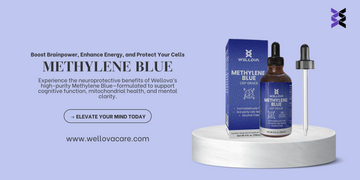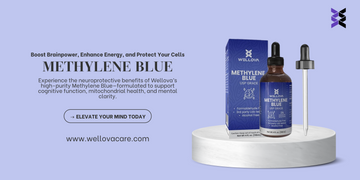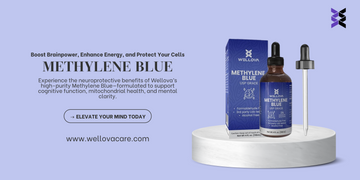TL;DR:
- Methylene blue is used in medicine, research, skincare, and water treatment for its antioxidant and antimicrobial properties.
- 1% solution (10mg/mL): Lower concentration, easier to use, ideal for general research, therapeutic use, and water treatment.
- 2% solution (20mg/mL): Higher potency, suitable for specialized lab research or stronger medical needs—may require dilution.
- 1% is more affordable and beginner-friendly; 2% offers stronger effects but needs careful handling.
- Always consult a professional before medical or therapeutic use.
- WellovaCare offers premium-grade methylene blue in both concentrations for safe and effective use in Canada.
Methylene blue is a highly versatile compound with applications across medicine, research, and water treatment. With different concentrations available, primarily 1% and 2%, choosing the right one depends on specific use cases. This guide will explore the key differences, benefits, and applications to help you make an informed decision.
What is Methylene Blue?
Methylene blue is a synthetic compound with a long history of use in healthcare, microbiology, and chemistry. Recognized for its powerful antioxidant, antimicrobial, and oxygen-carrying properties, it serves various industries, from medical treatments to scientific research and even skincare.
Common Uses of Methylene Blue
-
Medical Applications: Used in treating methemoglobinemia, urinary tract infections, and as an investigational therapy for neurological conditions.
-
Scientific Research: Functions as a staining agent in microbiology and serves as a redox indicator in chemical experiments.
-
Water Treatment: Helps prevent infections in fish, purifies aquariums, and is utilized in water filtration processes.
-
Skincare and Anti-Aging: Increasingly recognized for its potential in reducing oxidative stress and improving skin health.
Key Differences Between 1% and 2% Methylene Blue
The primary distinction between these solutions is their concentration, which affects potency, dosage, and applications.
| Feature | 1% Methylene Blue | 2% Methylene Blue |
|---|---|---|
| Concentration | 10 mg per mL | 20 mg per mL |
| Potency | Lower concentration, suitable for mild applications | Higher potency, may require dilution in some cases |
| Medical Use | Ideal for therapeutic treatments with controlled dosages | Used for conditions requiring stronger doses or lab research |
| Cost | More affordable due to lower concentration | Slightly higher price due to increased potency |
| Ease of Use | Easier to measure and handle | Requires precise measurement to prevent overdosing |
Choosing the Right Methylene Blue Solution
-
If you need a gentle yet effective concentration for general research, medical applications, or water treatment, 1% methylene blue is typically the best choice.
-
If a stronger potency is required for specialized treatments or lab experiments, 2% methylene blue may be the optimal solution.
-
Always consult with a professional before use, particularly in medical or therapeutic contexts, to ensure safe and proper application.
Where to Buy High-Quality Methylene Blue?
For premium-grade methylene blue, shop at WellovaCare—your trusted source for safe, high-purity formulations designed to meet the highest quality standards. Browse our selection today and experience the benefits of top-tier methylene blue solutions tailored to your needs.
By following this guide, you'll be well-equipped to choose the right methylene blue concentration for your specific requirements. Bookmark this page for future reference and stay informed about the latest developments in methylene blue applications!





